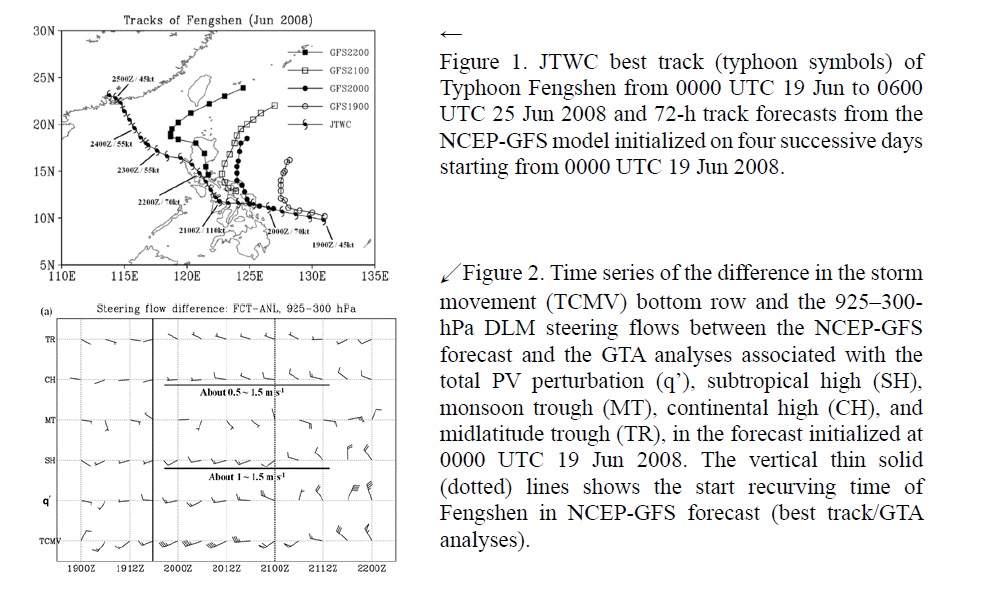Graphical Abstract
Yang, C.-C., C.-C. Wu, and K. K. W. Cheung, 2018: Diagnosis of large prediction errors on recurvature of Typhoon Fengshen (2008) in the NCEP-GFS Model. J. Meteor. Soc. Japan, 96, 85-96.
https://doi.org/10.2151/jmsj.2018-009
Graphical Abstract with highlights
Highlights:
- The steering flow analysis based on potential vorticity (PV) diagnosis is used to examine the reasons why the National Centers for Environmental Prediction Global Forecast System (NCEPGFS) model showed large track forecast errors (Fig. 1) with over-recurving movement in Typhoon Fengshen (2008). In particular, two forecasts initialized at 0000 UTC 19 and 20 June 2008 are demonstrated in this study.
- The deep-layer-mean (DLM) steering flow between 925 and 300 hPa with tropical cyclone components filtered out is directed to the west or northwest in the analysis field, which can account for the continuous westward and northwestward movement in the best track. However, the DLM steering flow is shown more toward the north in the forecast fields.
- Four distinct PV features associated with the corresponding subtropical high, monsoon trough, continental high, and midlatitude trough are identified to diagnose their balanced steering flows around the storm.
- The result based on PV analysis indicates that the reduced westward steering flow in the forecast field (Fig. 2) is mainly attributed to the subtropical high which is over-predicted to extend southwestward, as well as the continental high with underestimated coverage, as characterized by the geopotential height at 500 hPa.
- The steering flow associated with the monsoon trough plays an essential role while Typhoon Fengshen (2008) experiences northward recurvature in both analysis and forecast fields. Therefore the associated reduced westward steering flow in the NCEP-GFS model leads to the over-recurvature of Fengshen.







